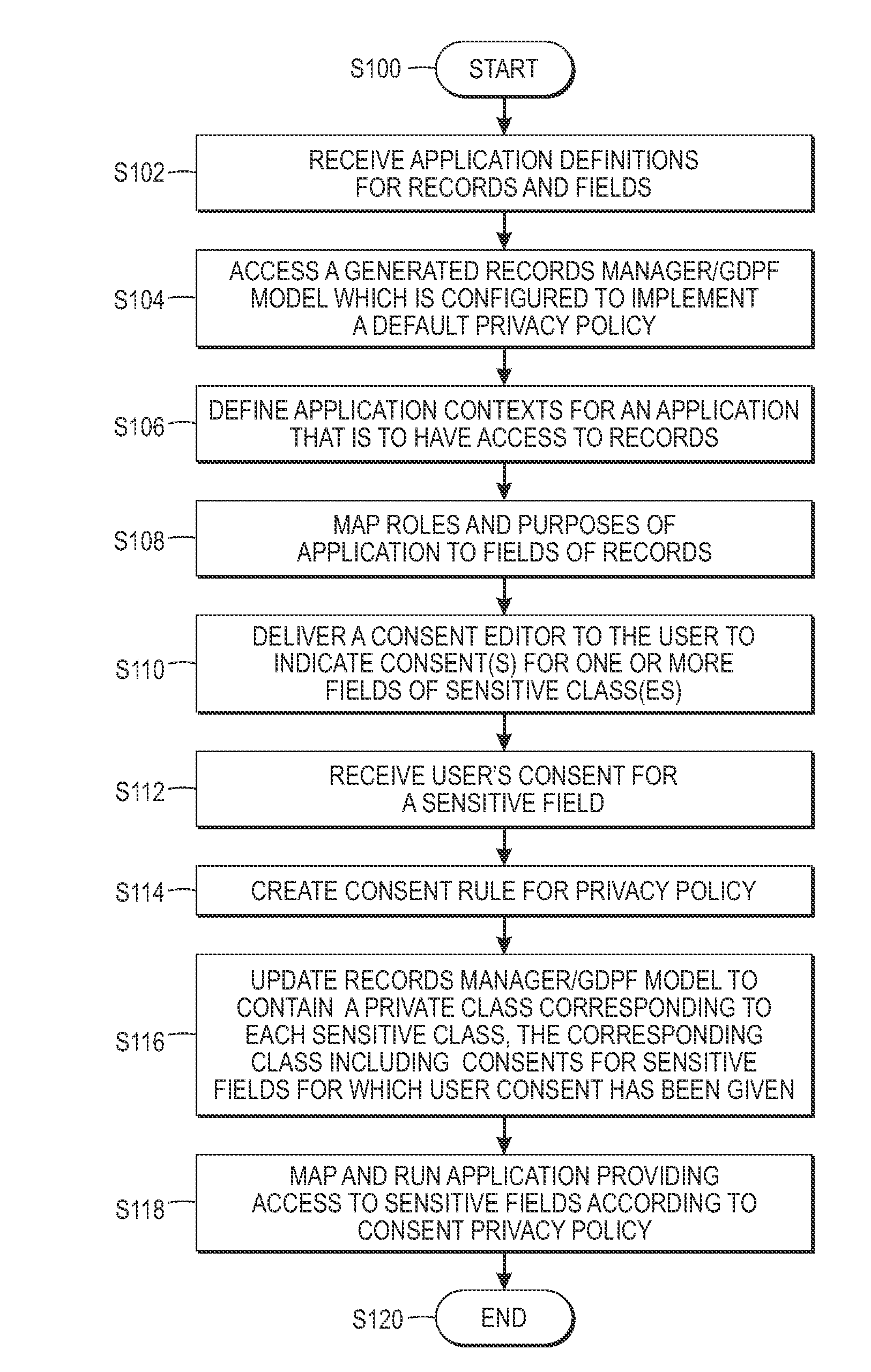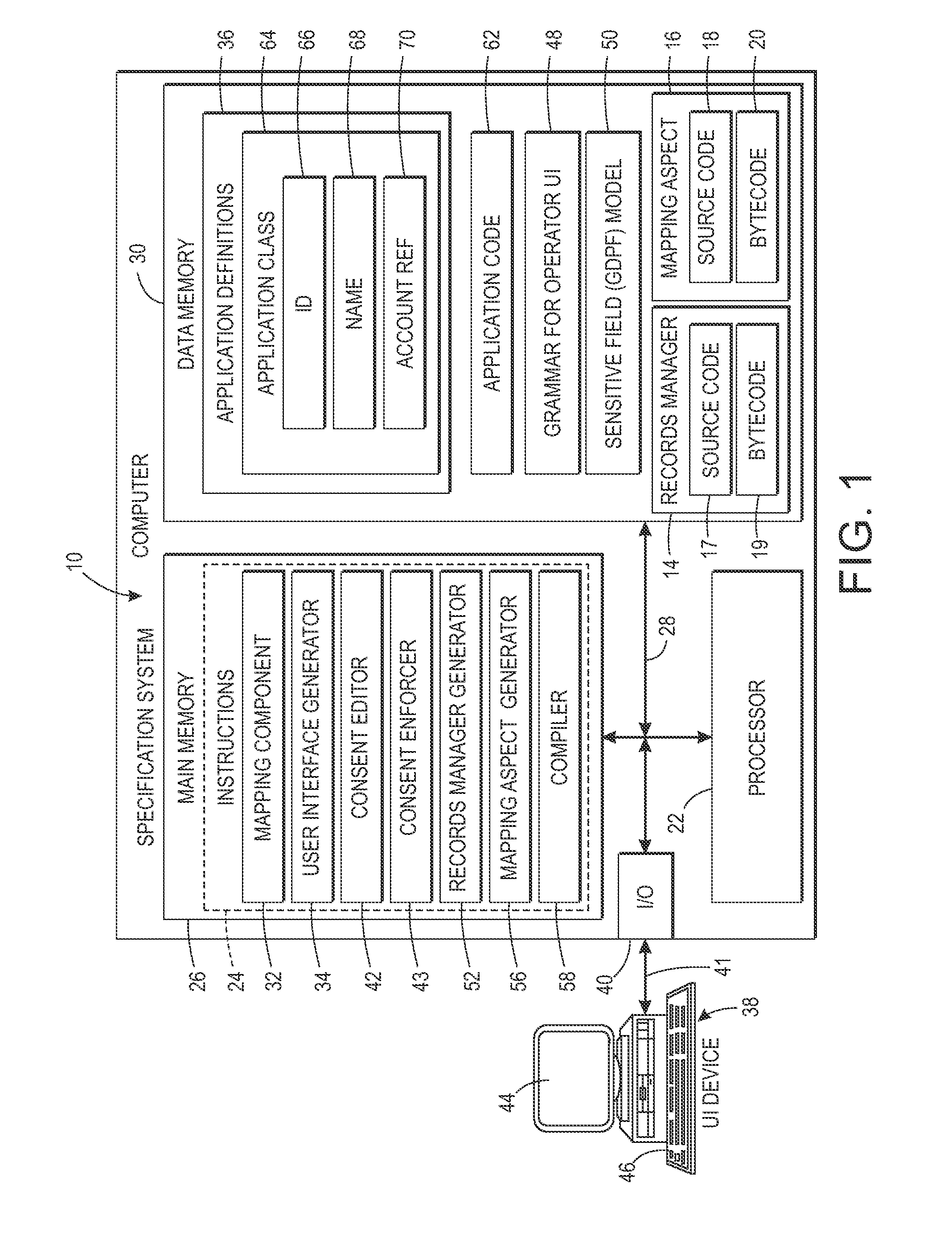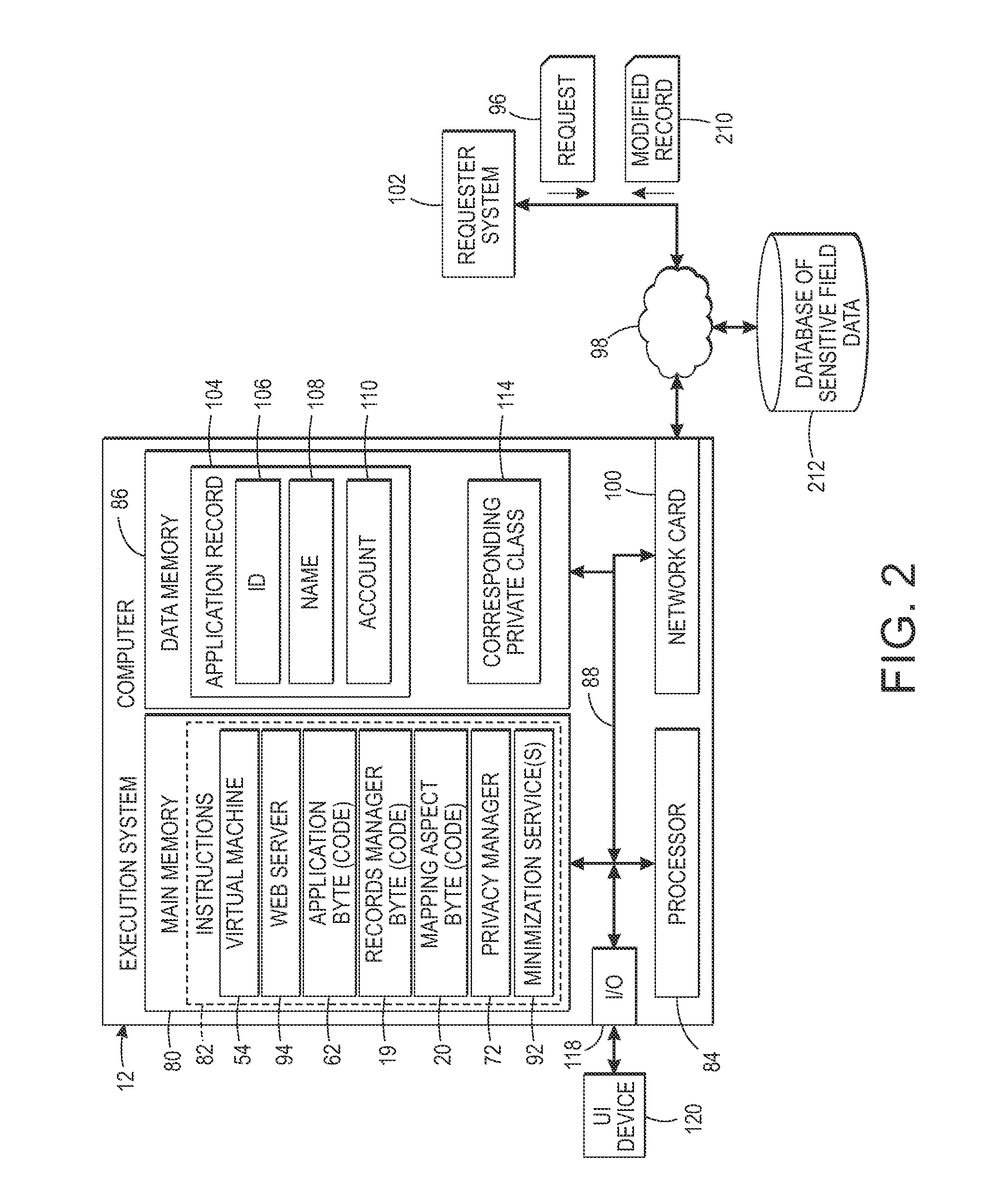Low-cost specification and enforcement of a privacy-by-consent- policy for online services
a privacy-by-consent and online service technology, applied in the field of low-cost specification and enforcement of a privacy-by-consent policy for online services, can solve the problems of not being able to conduct existing online business, not being able to build most online (webserver) applications, and not being able to meet the needs of users,
- Summary
- Abstract
- Description
- Claims
- Application Information
AI Technical Summary
Benefits of technology
Problems solved by technology
Method used
Image
Examples
example
[0105]A prototype implementation takes advantage of the following tools integrated within the eclipse environment: a) the XText technology, for the service architect to design within a specific text editor, the default privacy model, b) the XTend technology to generate all the mappings from the specific model towards the generic support implementation; and c) the AspectJ environment, in order to implement the records mapping without modifying the source application.
[0106]When editing a consent, a first step is to import the gdpf definition in the gdpf model 50 provided by the service provider. If this definition is not available, the editor 42 will not validate the consent. When the gdpf is imported, then the rules language will propose the records, fields, roles and purposes exposed in the gdpf model. Only textual fields were considered in the prototype implementation. The minimizers and expanders used were as follows: The returned minimized value is the ‘opaque’ string. When this ...
PUM
 Login to View More
Login to View More Abstract
Description
Claims
Application Information
 Login to View More
Login to View More - R&D
- Intellectual Property
- Life Sciences
- Materials
- Tech Scout
- Unparalleled Data Quality
- Higher Quality Content
- 60% Fewer Hallucinations
Browse by: Latest US Patents, China's latest patents, Technical Efficacy Thesaurus, Application Domain, Technology Topic, Popular Technical Reports.
© 2025 PatSnap. All rights reserved.Legal|Privacy policy|Modern Slavery Act Transparency Statement|Sitemap|About US| Contact US: help@patsnap.com



